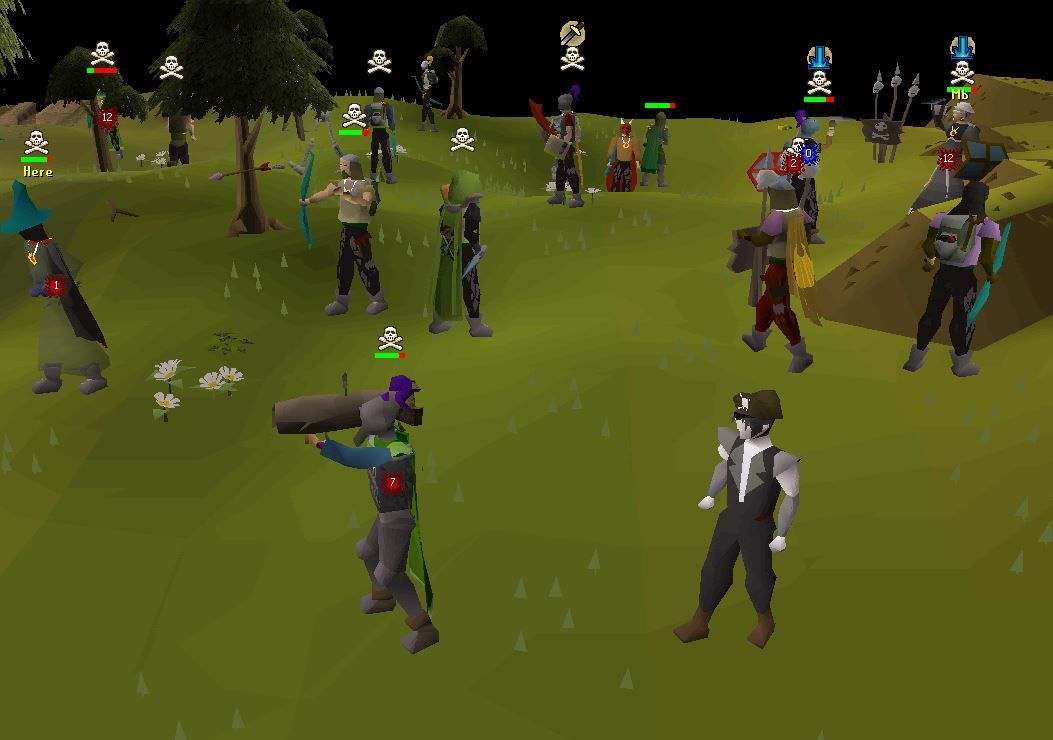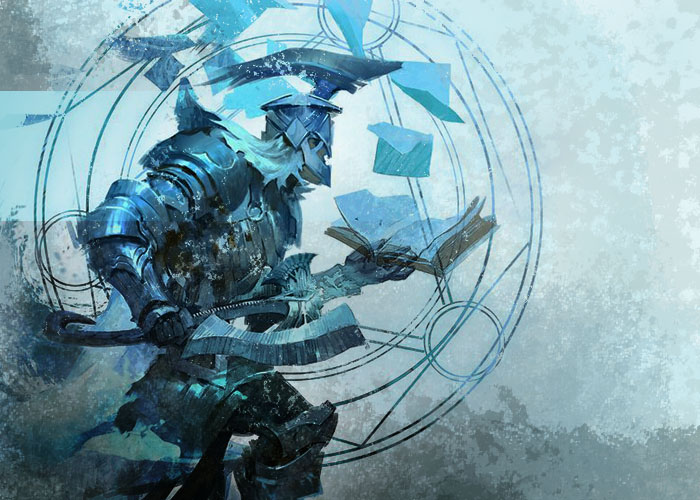
Released in 2012, Guild Wars 2 is the flagship MMORPG for NCSoft, boasting a massive and dynamic open world, fast-paced action combat with some of the greatest build diversity in the genre and a plethora of unique mechanics, and a storyline spanning more than a decade. Does it hold up after all these years?
I’ve actively played Guild Wars 2 for over 3 years now. During that time, I’ve completed the entirety of its story, successfully cleared almost every encounter in the game, and made many friends along the way. I’ve experienced some of the game’s highest highs and lowest lows. Is it worth getting into the game as a new player in 2024? Let’s discuss.
About Guild Wars 2
One of the original trailers for Guild Wars 2.
Guild Wars 2 is an action combat MMORPG with a massive open world and a focus on collaborative world events and exploration. It provides players with a huge amount of freedom and is well-known throughout the MMO community for being particularly casual-friendly and respecting players’ time.
Story

Across the story of Guild Wars 2, you'll visit colorful locations and meet colorful characters.
Taking place in the fantasy world of Tyria, the same setting as the original Guild Wars, the game’s story is one of unity and progress. Playing as a member of one of five unique races (more on them later), the choices you make in character creation and throughout some early story instances will change the outcome of your character’s individualized story, known as the Personal Story. Perhaps the most important choice in the story is which of the three Orders you join—the knightly Vigil, the scholarly Durmand Priory, or the secretive Order of Whispers.
As the story progresses, you and your allies will band together the disparate people of Tyria to face off against a common threat: the Elder Dragon Zhaitan and its army of undead monsters, the Risen.
Though the story continues well beyond the Personal Story in the form of the game’s many expansions, the format shifts quite a bit. Unlike the individualized Personal Story, the rest of the story follows a linear structure. You may still encounter some small changes or clever details based on your race, class, or some past choices, but the story at large will be the same for every player.
Without delving into spoilers, the expansion stories will see you bringing together a band of colorful characters from across the world of Tyria as they face off against a variety of evils—Dragons, Gods, cult leaders, Liches, and the like. Guild Wars 2’s cast is varied and interesting, filled with compelling characters; the individual plots, while often rather simple, are generally quite engaging. The deeper lore and worldbuilding of Tyria are also incredibly interesting, leaving much for players to discover and theorize on.
Gameplay
Just the base story provides you with hours of content.
Character Creation
Guild Wars 2 has five races to choose from: beyond the standard humans, you have the pint-sized Asura, masters of magitech; the tall, polar-dwelling Norn, who worship nature spirits; the plant-like Sylvari, who are born from the Pale Tree; and the large, horned, cat-like and militant Charr, who served as one of the main antagonists of the original Guild Wars.
As for classes, there are nine to choose from, divided into three armor classes: the heavy Warrior, Guardian, and Revenant; the medium Thief, Ranger, and Engineer; and the light Mesmer, Elementalist, and Necromancer. Unlike most other MMORPGs, in which classes are sorted into a trifecta of Tank, DPS, and Healer, each class in Guild Wars 2 can serve any of those roles depending on how you build your character.
As you progress through the game, you’ll be able to put together a unique build by combining various weapons—which provide different skills based on the type—class skills, and the passive traits provided by up to three Specializations. Best of all, the game never locks you in to one build: you can change any aspect of it at any time (except mid-combat, of course) other than your class itself.
For those who purchase the expansions, their build options will expand even more once they reach the max level of 80. Each class has three ‘Elite Specializations’, a special type of Specialization which, once unlocked and activated, changes up your class’s gameplay in unique ways. You can only use one of these Elite Specs at a time, however.
In-Game Activities
There’s a wide variety of things to do in Guild Wars 2. As mentioned above, the game has a focus on exploration. The core game provides 26 different zones to explore, each filled with a variety of things to discover.
Each map contains not only waypoints, which unlock fast travel at any time outside of combat; and hero point challenges, which grant the titular hero points with which you can unlock upgrades for your class; but also, various points of interest and vistas highlighting interesting landmarks and terrains. You’ll be rewarded for finding every point in a zone, and a unique reward may await those who complete all of them...
The open world is also home to many events, which occur dynamically in real-time across each of the map zones. In some areas, you will encounter particularly large and/or complex chains of events known as meta-events, which often feature world bosses and offer unique daily rewards upon completion. Events cover a wide range of activities, from fighting enemies, defeating bosses, protecting or escorting NPCs, collecting items, solving puzzles, and more.
Beyond the open world, there’s also a decent selection of instanced PvE content to enjoy. Though Guild Wars 2 has a much smaller selection than some of its contemporaries, most of its encounters are high-quality, with unique mechanics that make each fight stand out. Players can enjoy Dungeons, Raids, Strikes (which are instances containing a single boss, similar to FFXIV’s Trials), and Fractals (short mini dungeons with small random variations meant to be played daily).
For more competitive players, the game features a structured PvP gamemode, as well as the unique World versus World gamemode, which pits entire servers against each other in a huge, siege-oriented battle between three servers across four maps, often involving hundreds of players.
Combat
Combat in Guild Wars 2 will really let you show off your skill and buildcraft.
The combat system is one of the places where Guild Wars 2 shines the most. As mentioned above, you have an incredible degree of freedom when it comes to building your character, allowing for a large variety of unique builds. The ability to swap out builds on the fly also allows you to tailor your build for each individual encounter they go up against.
Combat is fluid and action-oriented. You can attack while moving and have the ability to dodge through enemy attacks à la the Soulslike genre, making combat much more skill-focused rather than being a simple numbers game. There are also a wide variety of conditions and unique utility effects, providing plenty of depth to the system as a whole.
Guild Wars 2 also features a truly revolutionary combat mechanic: the defiance bar. Simply put, boss enemies, which are generally immune to crowd control effects for obvious reasons, will often instead have a ‘defiance bar’ that can be damaged by attempting to use crowd control on them. Breaking the defiance bar renders the boss more vulnerable to damage for a short time—or, in some endgame fights, breaking the bar is necessary to prevent the boss from using a devastating attack, or interacts with some other mechanic.
Leveling

Guild Wars 2 features an extensive skill training system and some of the greatest build freedom in the genre.
The max level in Guild Wars 2 is 80—the exact same as it’s been since the game launched in 2012. The game utilizes horizontal progression, meaning that new endgame content exists at the same tier as the core game’s endgame. A player who’s reached max level is capable of taking on any of the game’s expansions without the need to continue grinding a gear treadmill.
Aside from simply leveling up, the main way you increase your character’s strength is by using the ‘hero points’ you earn from completing challenges across each of the open-world zones to unlock news skills and Specializations.
As described earlier, each weapon also has a set of skills associated with it for each class that can use it. Each class has quite a few weapons to choose from, giving you plenty to experiment with.
Even at max level, there’s still more to unlock in Guild Wars 2 in the form of the mastery system. You can continue to earn experience after reaching max level, at which point it can be used in conjunction with Mastery Points—either found throughout the maps or earned from achievements—to unlock Masteries. Some Masteries unlock minor bonuses or quality of life options; others introduce game-changing mechanics such as gliding, mounts, and the Jade Bot.
Quest System
Guild Wars 2 lacks the typical quest system one would expect from a typical MMORPG. The role of general questing in the open world is instead filled by world events—which we discussed above—and renown hearts.
Renown hearts are part of map completion, and they appear in the core game zones as well as some of the expansion zones. Each renown heart provides you with a variety of tasks to perform in order to help the locals. As with world events, these can include many activities, such as defeating enemies, collecting items, completing events, or occasionally even participating in unique minigames.
As for the main story, it is told through a series of story missions. These may have you complete tasks in the open world or enter instanced missions. The Personal Story unlocks in small chunks as you level up, while expansion stories can be completed in one go as you explore the maps they take place on.
The story itself of Guild Wars 2 is quite interesting, and for the most part the missions follow through. You’ll be facing off against unique bosses, sneaking through stealth missions, and sleuthing for clues as you chase down the big bad of each story. In more recent releases, the format of story fights has been altered so that they’re essentially the ‘easy mode’ of each expansion’s new endgame instanced content, giving new players a foot in the door for harder content.
Graphics
The landscapes and architecture of Tyria are a sight to behold.
Guild Wars 2 strikes a balance between stylized and realistic with its graphics—it isn’t nearly as cartoony as the highly-stylized World of Warcraft, nor does it strictly pursue realism either. As for the graphics engine itself, it has fallen a bit behind the times, but the developers have made recent efforts to keep it up to snuff. It won’t be winning any awards for graphical performance, but all but the biggest graphics snobs should be content with the game’s general look.
Where it somewhat lacks in its graphics engine, Guild Wars 2 makes up for it with stellar environmental design. A few of the core maps can feel a bit flat and empty, but the expansions feature some of the most stunning and thoughtfully-crafted environments in the genre.
When it comes to player characters, the animations are generally pleasing, though in the midst of combat with many players, it can become difficult to tell what’s happening through all the skill effects. There’s a wide variety of skins for both weapons and armor, and all of the game’s armor is dyeable, though some races and body types are rather prone to clipping issues. The game also features a simple yet highly effective wardrobe system which allows players to easily alter the appearance of their equipment to match any skin they’ve unlocked.
New Content Updates

The name of this expansion comes off as a bit of a spoiler, doesn't it?
Guild Wars 2 has a total of four expansions—“Heart of Thorns”, “Path of Fire”, “End of Dragons”, and the most recent “Secrets of the Obscure”—and five additional, less focused releases in the form of the Living World seasons 1-4 and “The Icebrood Saga”, which is essentially the fifth Living World season.
Each major release brings with it new maps, a new set of Masteries, and a new plot with corresponding story missions. Most have also included new instanced content. Recently, ArenaNet announced a change to their release format, now focusing on shorter expansions split into quarterly releases, with the recent “Secrets of the Obscure” being released in this style; the new content model also sets specific standards for the release of instanced content, promising a Fractal and two Strikes with each expansion.
The general quality of the expansions is, though a bit inconsistent, quite high; it blows much of the core game, which is already generally solid, out of the water. The most recent expansion has been a bit controversial, with players feeling that the expansion has too little content and that the story feels rushed; this could, however, simply be a growing pain of the new content model.
Guild Wars 2's Developer, ArenaNet

The oakheart certainly makes for an impressive logo backdrop.
Guild Wars 2 is developed by ArenaNet, which itself is owned by NCSoft. Being a decade old, the game has some performance and graphical limitations due to the old engine.
Fans often lament that ArenaNet has a tendency to abandon old content. Though the core game is very strong, there are many small bugs and inconsistencies throughout, some of which have gone unaddressed for years. Similarly, the PvP scene has an issue with rather rampant botting and toxicity, which has gone largely unmoderated.
To their credit, ArenaNet fixes most game-breaking issues very quickly. There have also been many instances where the team implemented community suggestions, though this isn’t always the case (some recent balance patches in particular have been quite controversial).
Price
The base game of Guild Wars 2 can be played completely free. This includes all core map zones, as well Living World Season 1 content; free accounts are, however, bound to some restrictions, such as reduced chat functionality. These restrictions are lifted upon purchasing any of the expansions; ArenaNet has also ran campaigns where they gave away unrestricted core account keys in the past, though it’s unclear if there are any plans to do so again.
As for the rest of the game, the expansions can be obtained via one-time purchases; unlike most of its competition in the genre, there’s no subscription to be had in Guild Wars 2. The first two expansions, “Heart of Thorns” and “Path of Fire”, can be purchased in a bundle for $29.99. For the same price, you can purchase the third expansion, “End of Dragons”. The fourth, “Secrets of the Obscure”, goes for $24.99.
If you want a larger bundle, there are two options available to you. The Elder Dragon Saga Collection contains “Heart of Thorns”, “Path of Fire”, and “End of Dragons” for just $49.99, a $10 discount from purchasing them separately. The Elder Dragon Saga Complete Collection, on the other hand, includes those three expansions and all five Living World seasons for just $99.99, saving you about $20 in total.
Aside from the Complete Collection, the Living World seasons can be purchased individually from the in-game shop using premium currency. It’s possible to convert the gold you earn in-game into said premium currency, so it’s also theoretically possible to earn the Living Worlds through gameplay if you’re seriously dedicated.
Final Verdict: 7.5/10
Guild Wars 2 is one of if not my favorite game of all time, but when looked at objectively, it has its fair share of flaws. The core gameplay is high-quality, but it’s held back by a variety of longstanding bugs, a slower release schedule than its contemporaries, and a decade-old engine.
Players may also have differing opinions on the use of horizontal progression in Guild Wars 2. For some, it elevates it far beyond other games in the genre; for others, it’s a deal-breaker that completely ruins the experience.
Pros:
- Core game is free, and there are no subscriptions
- Huge dynamic game world
- Incredible freedom in character-building
- Unique and engaging action combat
- The best mount system in the genre
- Deep and interesting story, world, and characters
- Structured competitive gamemodes
- Effective wardrobe system
Cons:
- Slower release schedule than contemporaries
- Smaller library of instanced content
- Minor bugs and inconsistencies
- Outdated graphics
- PvP lacks proper moderation

























